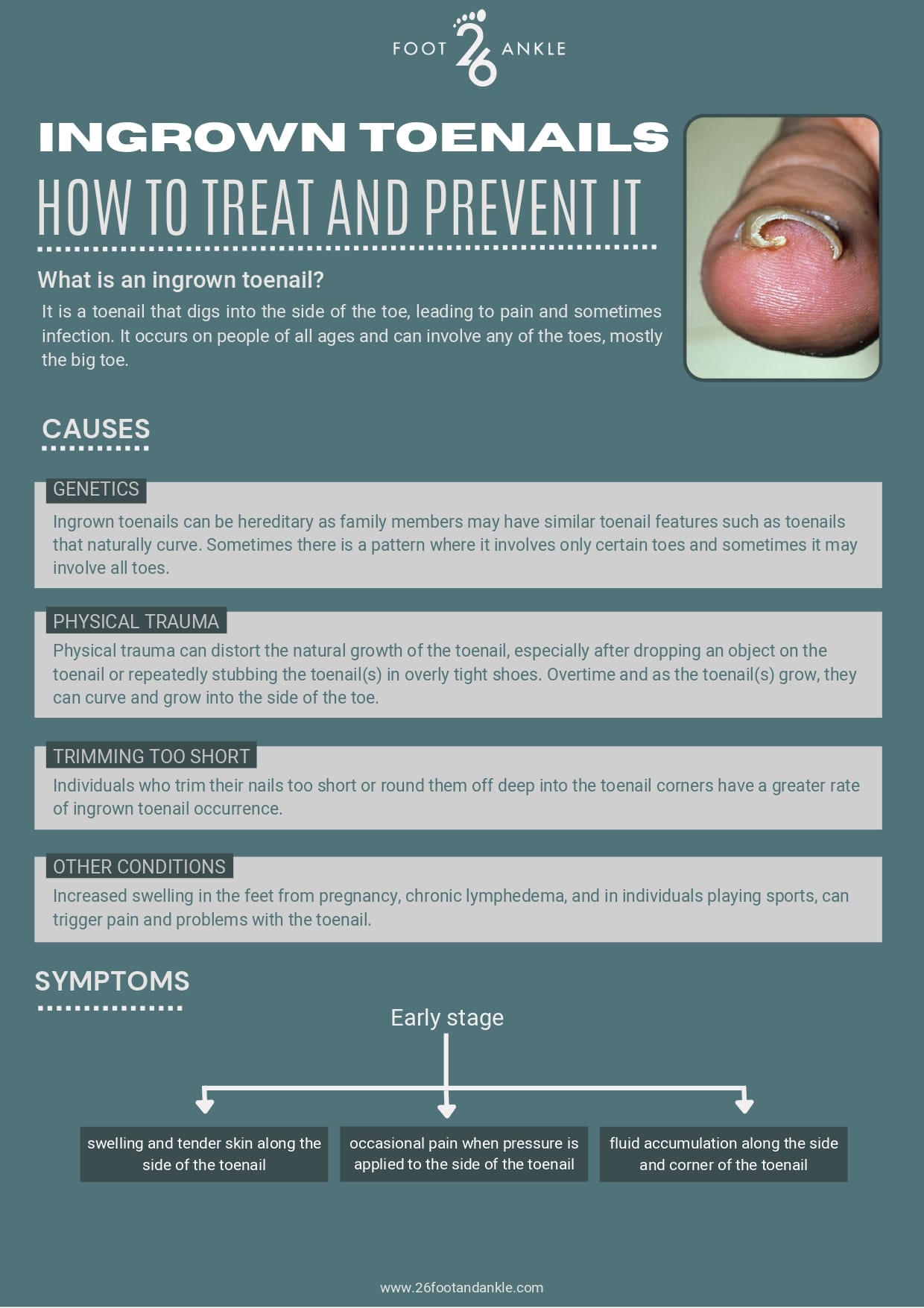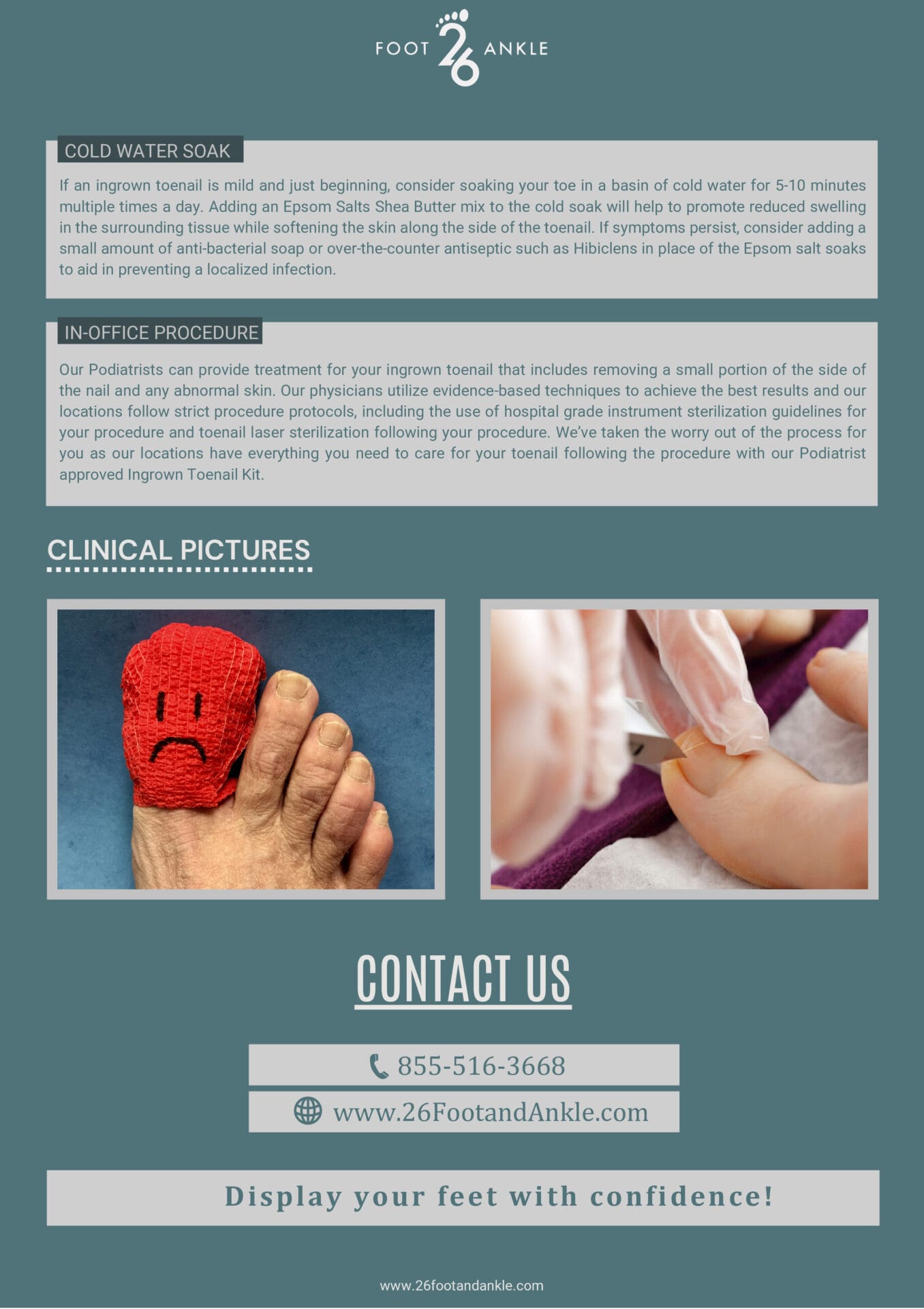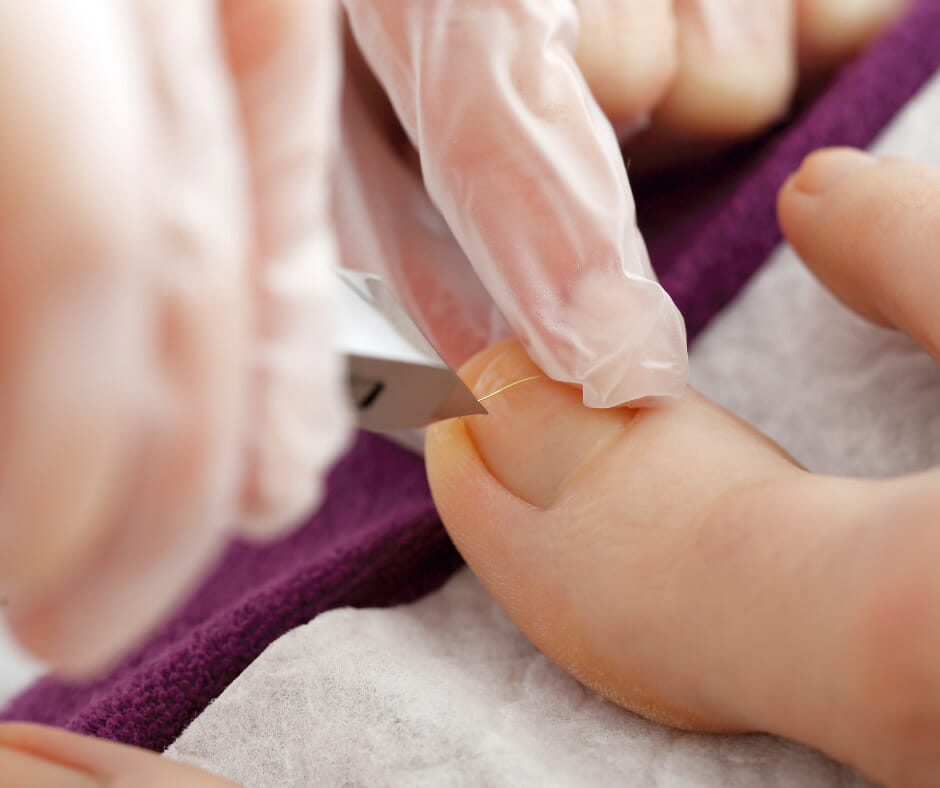The 26 Review
- What is an Ingrown Toenail? A toenail that digs into the side of the toe, leading to pain and sometimes infection
- Causes hereditary genes, tight shoes, trauma, cutting toenails too short
- Symptoms pain, redness, swelling, drainage, infection
- Diagnosis physical examination
- Treatment antibiotics, anti-inflammatories, topical medications, cold water soaks, in-office procedure
Toenails: Ingrown Toenail E-Book


INGROWN TOENAILS
Say goodbye to the pain and discomfort of ingrown toenails! Dive into our exclusive e-book, your ultimate guide to overcoming ingrown toenail struggles. Discover expert tips and practical solutions for healthy and pain free toes. Don’t miss out download now and step into a life free from ingrown toenail woes!

Let’s take a closer look…
If you suffer from ingrown toenails, you may already know that it can be incredibly painful and extremely inconvenient if not treated promptly and correctly. An ingrown toenail occurs when your nail grows into the surrounding tissue instead of moving away from it as it normally would. This causing inflammation, pain and oftentimes infection. Ingrown toenails occur in people of all ages and skin color and while the big toenail is the most commonly involved, any toe can experience the pain and problem associated with a painful toenail.
Causes
There are several reasons people experience problems related to their toenails. Although toenails can thicken over time, age is not necessarily correlated with developing a painful ingrown toenail, as this is very common problem in both kids and adults. Ingrown toenails can be hereditary as family members may have similar toenail features such as toenails that naturally curve. Sometimes there is a pattern where it involves only certain toes and sometimes it may involve all toes. Physical trauma can distort the natural growth of the toenail, especially after dropping an object on the toenail or repeatedly stubbing the toenail(s) in overly tight shoes. Overtime and as the toenail(s) grow, they can curve and grow into the side of the toe. Increased swelling in the feet from pregnancy, chronic lymphedema, and in individuals playing sports, can trigger pain and problems with the toenail. Lastly, individuals who trim their nails too short or round them off deep into the toenail corners have a greater rate of ingrown toenail occurrence.
Symptoms
Ingrown toenails usually worsen in stages and when recognized and treated early on, symptoms and permanent tissue damage can be minimized. Early symptoms include swelling and tender skin along the side of the toenail, occasional pain when pressure is applied to the side of the toenail, and even fluid accumulation along the side and corner of the toenail can occur. If left untreated, the surrounding tissue in the toe becomes increasingly redder and more swollen and the tenderness along the side of the nail progresses to more consistent pain. The skin immediately adjacent to the nail will harden and become callused, leading to additional discomfort. Overtime, the surrounding tissue will become very inflamed with overgrowth of skin around the nail. This granular tissue will bleed even with the slightest touch. As the ingrown toenail is neglected and left untreated, eventually an infection will develop, including the presence of fluid or pus.
Diagnosis
Individuals of all ages suffer from the symptoms of painful toenails, however, not all painful toenails are a result of an ingrown toenail. Other toenail conditions causing pain include Toenail Fungus and disorders such as a subungual hematoma, dystrophic toenail from previous trauma, and loose and detaching toenails. A Podiatrist clinical experience is the best means of diagnosing and properly treating the toenail.
Treatment
One of the easiest ways to treat an ingrown toenail is through prevention! Trim your nails regularly and cut straight across with a pair of sharp toenail clippers. Avoid digging in the corner of the toenail as it is very easy to leave a piece of toenail behind that will continue to grow into the end of the toe. Also, avoid filing the ends of the toenail into shapes like squares or circles, as those edges can get caught in socks and lead to additional problems. Finally, you should wear appropriate footwear; avoiding tight or compressive shoes that apply pressure and rubbing against the toenails. If an ingrown toenail is mild and just beginning, consider soaking your toe in a basin of cold water for 5-10 minutes multiple times a day. Adding an Epsom Salts Shea Butter mix to the cold soak will help to promote reduced swelling in the surrounding tissue while softening the skin along the side of the toenail. This can be very effective in decreasing minor problems associated with an acutely inflamed toenail. If symptoms persist, consider adding a small amount of anti-bacterial soap or over-the-counter antiseptic such as Hibiclens in place of the Epsom salt soaks to aid in preventing a localized infection.
It is always best to seek consultation with a doctor before any ailment gets worse and when the above at home treatments are insufficient in relieving the symptoms, it is time to see a professional. To prevent a worsening infection, and in rare cases, hospitalization requiring antibiotics, our Podiatrists can provide treatment for your ingrown toenail that includes removing a small portion of the side of the nail and any abnormal skin. Avoid visiting a nail salon every few weeks to have the corner of the toenail painfully dug out and removed, as our physicians can offer a relatively quick and painless option that is designed to be a permanently fix to the problem. Our physicians utilize evidence-based techniques to achieve the best results and our locations follow strict procedure protocols including the use of hospital grade instrument sterilization guidelines for your procedure and toenail laser sterilization following your procedure. We’ve taken the worry out of the process for you as our locations have everything you need to care for your toenail following the procedure with our Podiatrist approved Ingrown Toenail Kit.
Ingrown Toenails can be painful and problematic, and the thought of professional treatment can be intimidating, however, podiatric physicians have the most comprehensive training and experience when it involves resolving this issue. Our podiatrists have extensive experience diagnosing, preventing, and successfully treating mild and severe ingrown toenails, however, if you are still intimidated by the thought of having the ingrown toenail permanently removed, an alternative option is the Ingrown Toenail Band Application.